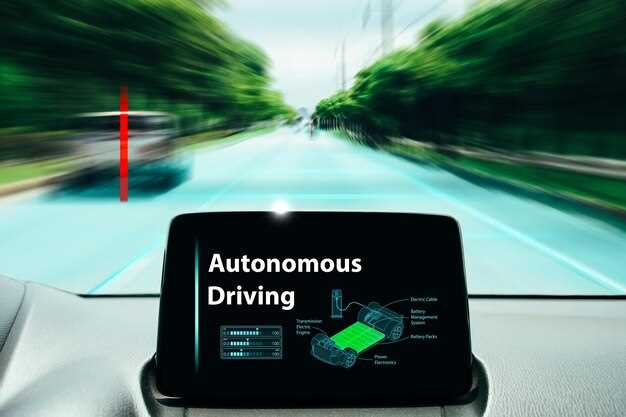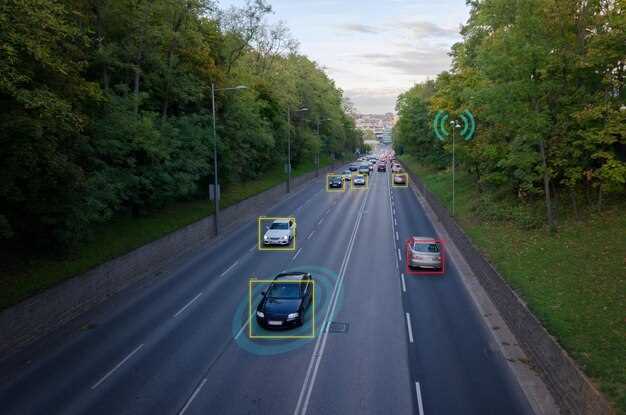
The rise of autonomous cars represents a transformative shift in the way we perceive transportation. As automation technologies continue to improve, the potential for fully self-driving vehicles becomes more attainable. However, the journey towards complete autonomy is fraught with numerous challenges that must be addressed to ensure safety, efficiency, and public acceptance.
Current challenges facing the autonomous driving industry include legal and regulatory hurdles, technological limitations, and the need for robust safety measures. Automation in driving poses questions about liability in the event of an accident, the ethical implications of decision-making algorithms, and the technical difficulties of navigating complex environments. These issues highlight the need for comprehensive research and collaboration among stakeholders to develop viable solutions.
Looking towards the future, the aspirations for autonomous driving extend beyond mere technological advancements. There is a vision of a world where cars are not only capable of driving themselves but also contribute to reduced traffic congestion, decreased carbon emissions, and enhanced urban mobility. Achieving this vision requires ongoing innovation and a commitment to refining automation systems while addressing the myriad of challenges that accompany this groundbreaking evolution in transportation.
Technical Limitations of Current Self-Driving Systems

The current generation of self-driving cars faces several significant technical limitations that hinder their full deployment and effectiveness. One of the primary challenges is the complexity of real-world driving environments. Autonomous systems often struggle to accurately interpret the vast number of dynamic variables present on the road, such as unpredictable human behaviors, varying weather conditions, and complex traffic scenarios.
Sensor limitations also play a crucial role in the automation process. Current sensors, including LiDAR, radar, and cameras, have specific ranges and can be affected by environmental factors like fog, rain, and glare from the sun. These limitations can lead to blind spots or misinterpretations of surrounding objects, jeopardizing the safety of automated driving.
Another technical aspect is the reliance on high-definition maps for navigation. Many self-driving cars depend on detailed maps that must be frequently updated to account for changes in road conditions or layouts. Maintaining these maps is a logistical challenge, as it requires continuous data collection and processing to ensure accuracy, especially in rapidly developing urban areas.
Moreover, the artificial intelligence algorithms that drive these automation systems must be trained on vast amounts of data to recognize and react to myriad situations. However, there are still scenarios, such as construction zones, accidents, or unusual road signs, that may not be adequately represented in the training data. This gap can create uncertainties in decision-making processes.
Lastly, the interplay between human drivers and autonomous vehicles remains a significant hurdle. Current self-driving systems often lack the nuanced understanding required to predict the intentions of human drivers, making them less effective in mixed traffic environments where human and automated vehicles interact. The ability to safely and efficiently navigate these interactions is vital for the future of automated driving.
Regulatory Barriers Impacting Vehicle Automation

The rapid advancement of self-driving technology faces significant regulatory barriers that impede the widespread adoption of automation in vehicles. These challenges stem from a combination of safety concerns, liability issues, and the need for standardized regulations across different jurisdictions.
One of the primary issues is the lack of a cohesive regulatory framework that governs the testing and deployment of autonomous vehicles. Each region often has its own set of rules, which can lead to inconsistencies and confusion for manufacturers. The absence of unified guidelines hinders innovation, as companies must navigate a complex web of legal requirements that vary widely between states and countries.
Safety regulations are another critical aspect affecting vehicle automation. Governments require extensive testing and validation for self-driving systems to ensure they meet safety standards. This process can be time-consuming and costly, delaying the introduction of new technologies. Regulators must grapple with the challenge of ensuring safety without stifling technological progress.
Liability concerns also create hesitance among policymakers. Determining the responsibility in the event of an accident involving a self-driving vehicle remains an unresolved issue. Questions arise about whether liability falls on the manufacturer, the software developer, or the vehicle owner. Until clear legal frameworks are established, stakeholders may be reluctant to embrace automation.
Furthermore, public perception can influence regulatory approaches. Governments often prioritize public safety and may impose stricter regulations in response to incidents involving autonomous vehicles, which can create a cycle of heightened scrutiny. Building trust in self-driving technology among consumers is vital for its acceptance and subsequent regulatory support.
To overcome these barriers, collaboration between industry stakeholders and regulators is essential. Developing a balanced approach that ensures safety while fostering innovation can propel the automation of vehicles forward. Initiatives that promote pilot programs and collaborative testing can help regulators gain insights into the technology, leading to informed policy decisions.
Public Perception and Acceptance of Autonomous Vehicles
The rise of automation in the automotive industry has led to significant advancements in the development of autonomous cars. However, public perception remains a critical factor influencing the widespread acceptance of these technologies. While many individuals express excitement about the potential benefits, such as improved safety and reduced traffic congestion, there are also considerable concerns that need to be addressed.
Research indicates that trust plays a pivotal role in shaping public attitudes towards autonomous vehicles. Many potential users are hesitant to embrace this technology due to fears surrounding reliability, safety, and the potential for technical failures. Incidents involving autonomous cars can easily amplify doubts and concerns among the public, affecting their willingness to adopt these vehicles.
Education and awareness are essential in this transition. As consumers become more informed about how automation works and its safety protocols, their confidence may increase. Demonstrations showcasing the effectiveness of autonomous driving systems can also help mitigate fears, as real-world examples often resonate more strongly than theoretical discussions.
The perception of cars as a personal space can impact acceptance too. Many individuals associate their vehicles with autonomy and personal control. The idea of relinquishing driving duties to a machine can be unsettling for some, as it challenges the traditional notion of car ownership. Addressing this perspective through thoughtful marketing and engaging community discussions will be crucial.
Furthermore, demographic factors, such as age and technological familiarity, significantly influence acceptance levels. Younger generations, who have grown up with technology, are generally more open to embracing autonomous cars. In contrast, older individuals may have reservations rooted in a lack of experience with automated systems.
To enhance public acceptance, stakeholders must focus on transparency. Open communication about the development processes, safety standards, and the actual capabilities of autonomous vehicles is necessary to build trust. Collaborative efforts between manufacturers, regulators, and communities can help shape a more informed narrative around automation.
In conclusion, while the potential of autonomous vehicles is immense, addressing public perception of automation is vital for their successful integration into everyday life. By fostering understanding and trust, the automotive industry can pave the way for a future where autonomous cars are not only accepted but embraced by society.




